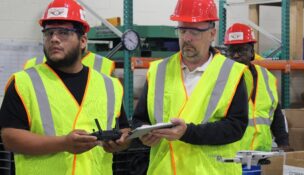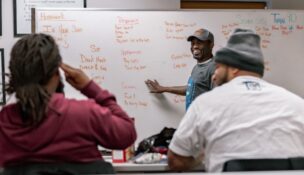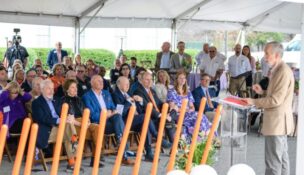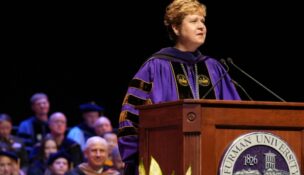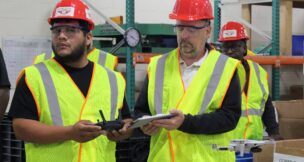One year in: OneSpartanburg projects underway
Staff //April 17, 2018//
Editor's Note: This story originally appeared in the April 16 issue of GSA Business Report.
Sixteen months into the OneSpartanburg initiative and 22 projects have been ignited, 312 volunteers have been engaged and five action teams assembled. The initiative, launched by the Spartanburg Area Chamber of Commerce in January 2017, is a five-year economic and community development plan that includes more than 40 specific economic development action items and hundreds of tactical recommendations. The cost to implement it fully was identified at $5.1 million.
The OneSpartanburg goal is to raise levels of prosperity and improve quality of life for all Spartanburg County residents. There are four key drivers linked to this goal: talent, economy, image and place.
“The initiative really began in 2016,” said Allen Smith, president and CEO of the Spartanburg chamber. “We spent a year building the plan that was launched in January.”
Smith said the activity of the OneSpartanburg initiative has coincided with “tremendous momentum in Spartanburg and Spartanburg County.” He said that in 2017, $1.2 billion was invested in the Greenville/Spartanburg area, with $885 million of that in Spartanburg County, resulting in 1,789 new jobs.
Along with OneSpartanburg, the chamber launched a new entity – the Downtown Development Partnership. Smith said that partnership is driving investment and jobs downtown.
“Downtown, in the last month, there have been 33 business openings, 20 of which were restaurants,” he said.
When the chamber developed the Downtown Development Partnership it hired Jansen Tidmore as executive vice president. Tidmore has been actively involved in the OneSpartanburg initiative.
“One of the key drivers of the OneSpartanburg initiative is ‘place,’” Tidmore said, adding that projects are underway to ensure a sense of place for downtown visitors.
“What makes a community livable? It’s quality of space. People are seeking that,” he said.
The need to create quality of space started the conversation of “looking at our assets downtown and our weaknesses.”
“One thing we have is walkability. But where we had a weakness was wayfinder signage – people coming out of parking garages may not know which way to turn, so we initiated a wayfinding audit,” he said.
Tidmore used Wofford College as an example.
“We want to encourage students and employees to take the 15-minute walk to downtown instead of driving. We think they will if they know it’s a 15-minute walk. This is where signage will help,” he said.
Tidmore said he is working with Toole Design Group in Spartanburg on the wayfinding signs and anticipates having the pedestrian wayfinding audit done by the end of July.
Another project underway downtown is the use of pedestrian counters to gather numbers and trends of pedestrian traffic. Tidmore said the information gathered will be useful for business development downtown.
Some pedestrian counters have been in use since November 2017, Tidmore said.
“We grabbed pedestrian numbers 30 days prior to the opening of the AC Hotel and 30 days after,” he said. “There was a 17% increase in pedestrians after the hotel opened.”
Another key driver of the OneSpartanburg initiative is talent, which includes the initiative Education to Employment.
Krista Newkirk, president of Converse College, is on the talent action committee. She said there seems to be a disconnect between the skills businesses need and the education being provided.
“We need to make sure college provides the degrees and skills businesses need — technical, professional and behavioral competencies,” she said.
Newkirk said she is concerned about employee search systems used by a lot of companies. She cited Taleo as an example, which is an automated system that matches employers with job seekers using a defined set of keywords. She said the system isn’t perfect and might miss qualified employees.
“The automated system might miss skills like communication skills, teamwork, ethical judgement, project management,” she said. “There needs to be a way to capture that.”
Newkirk said one way to make sure employers are getting what they need is to make sure curriculum is on the same page.
“We’re meeting with companies and educators on how to get students from high school to college or technical schools to jobs with the skills they need,” she said. “And we’re looking at how we get younger ages to understand what the jobs are — even job shadowing opportunities can expose them to what’s out there.
“With the close connections we have in Spartanburg, we have real potential here,” she said.
e





